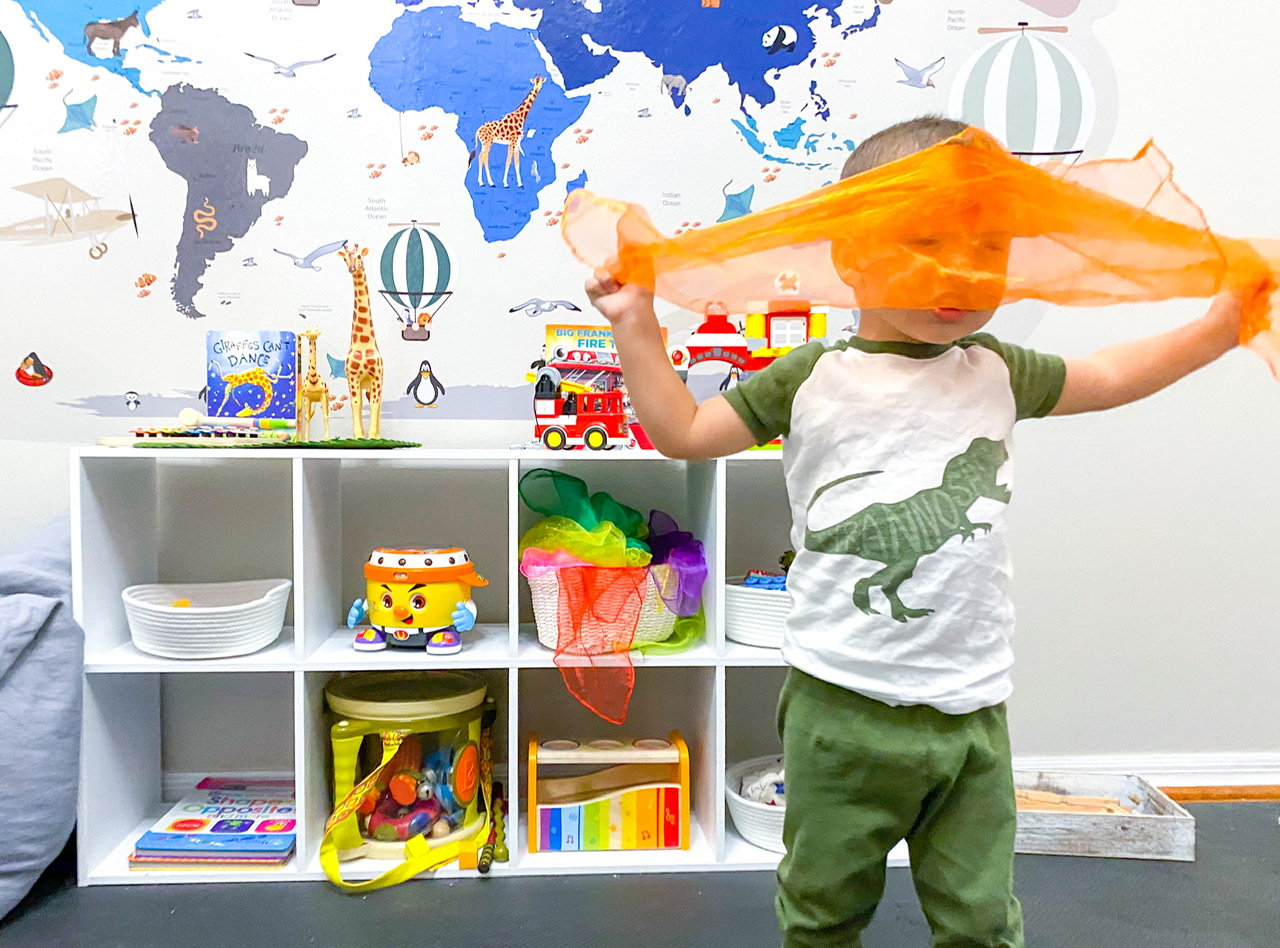Looking for the ultimate guide to toy rotation Benefits and why you should add it to your home? Here is the only guide you need!
My son was just 1 year old and his playroom was already overflowing with toys. How did this happen? He had so many toys yet he didn’t play much with them. His attention span was so short and I was so overwhelmed with the clutter. I needed a solution.
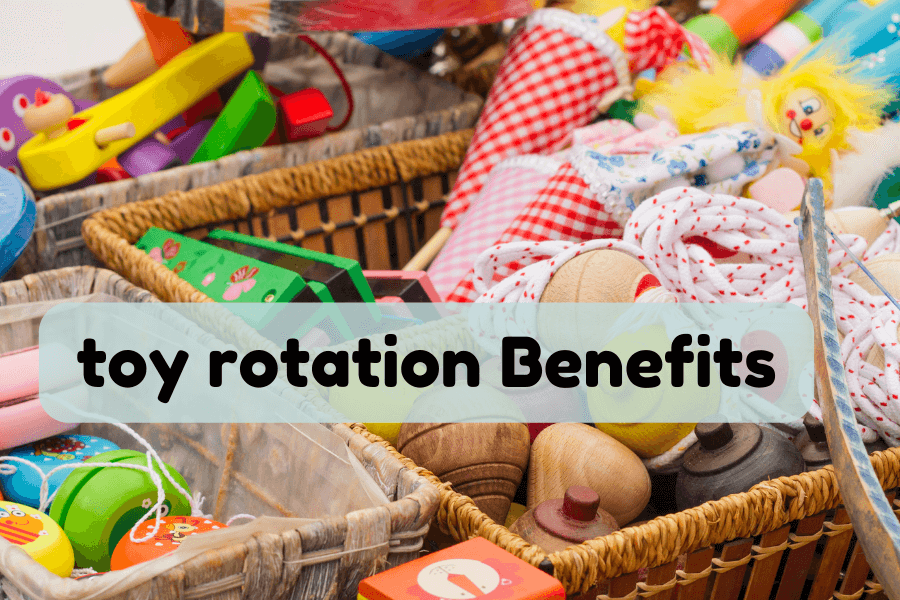
This post is all about toy rotation benefits and why the lead to more play
If this scenario sounds familiar, I want to share with you the art of toy rotation and how to make this system part of your routine.
Toy Rotation Benefits: Toy rotation consists of having a limited amount of toys available to play at a time. Separate the bin, use items into categories, and create a storage system to rotate the toys. Do Toy rotation regularly to increase playtime and creativity.
Having too many toys inhibits creativity, independent play and problem-solving skills. Toddlers who have too many options at once end up not choosing anything at all and have trouble playing independently. Introducing toy rotation can change this.
Creating a unique system that works for you is key to having toy rotation success. Learn how you can apply these principles in your home no matter how big or small your play area is.
Getting started with toy rotation & it’s benefits
Here’s the ultimate guide to starting a toy rotation that will inspire more play and will help you spend less time picking up toys at the end of the day.
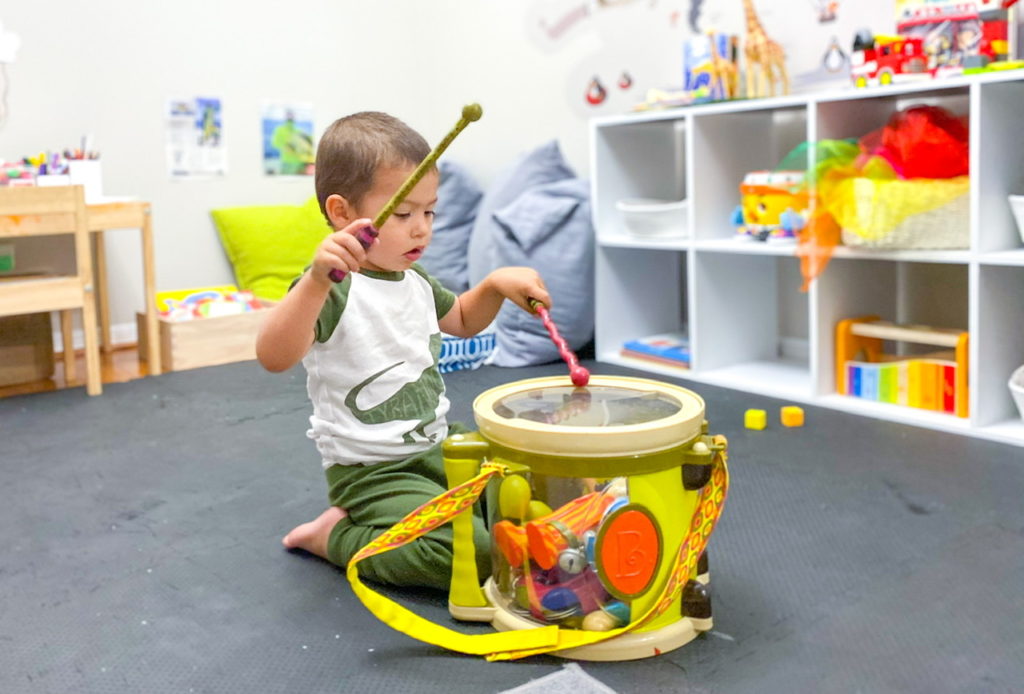
The Benefits Of Toy Rotation
Toy rotation decreases clutter
Being minimalistic is not just for the home, but it is also beneficial for the kids. Decluttering is essential to both physical and mental well-being. As more things occupy our space, they find a way to sneak into our minds and lead to increased stress and anxiety.
Clean-up is faster. When every toy has a home toddlers can participate in cleaning up their spaces and feel accomplished as opposed to feeling defeated when they have too many.
Having fewer toys available allows the mind to be free of visual clutter and has room for creativity to flourish.
toy rotation benefits: increases creative play
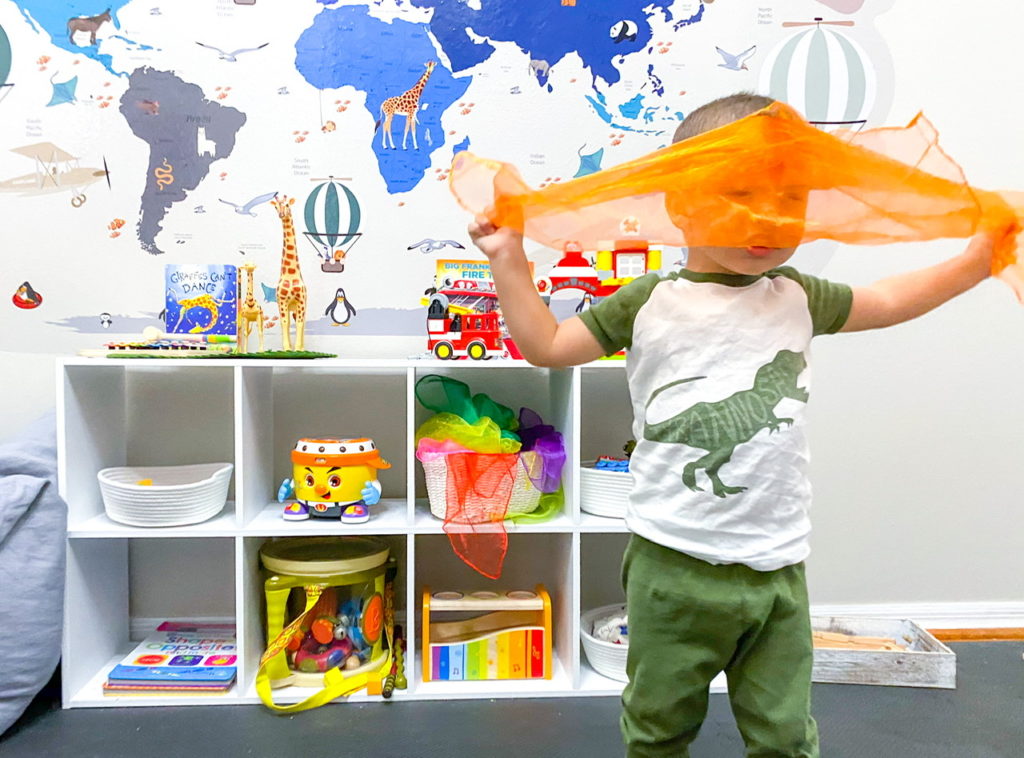
According to a research study, we have learned that kids that have too many toys available at one time play less than those who have fewer toys to choose from.
When a toddler has too many choices, they tend to have trouble choosing what to play with, and they end up not wanting anything.
When (what Age) To Start Toy Rotation
Toy rotation can start the moment your baby starts to play. At the newborn stage, you can rotate the black and white pattern cards you display, and as older toddlers, you can rotate the toys you display on shelves.
No matter what age your kids are at this time, it is never too late when you can start implementing a toy rotation strategy and start seeing the results right away.
How to Start With Toy Rotation
step 1: do a toy inventory
Before you can start with toy rotation, you need to know what you are working with. The first step is always to take inventory. Taking inventory is the hardest part if you have too many toys.
Don’t skip this step; it is the most critical part as it will allow you to see what you are working with clearly.
During nap time, a rainy day, and lots of coffee, gather all of the toys in one room. If you have different play areas, bring all those toys in.
How to know when to get rid of toys
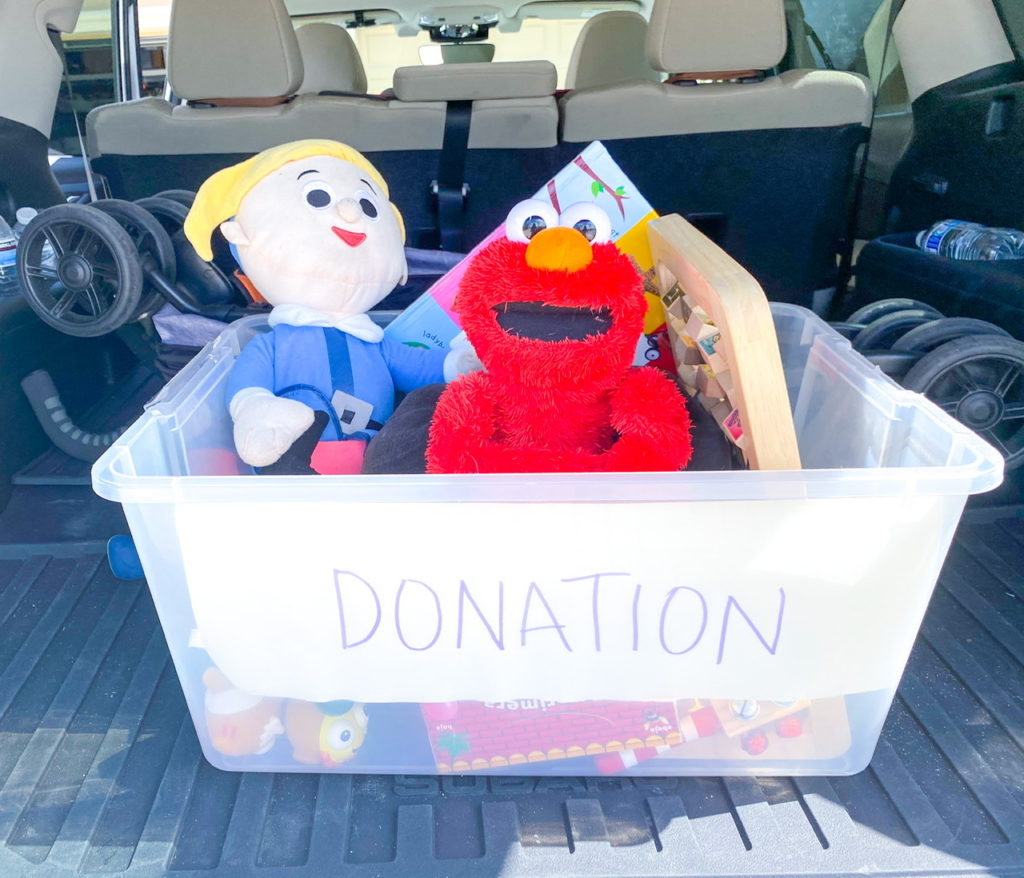
Separate any toys that are not working, puzzles with missing pieces, and broken. During play, you are raising confident kids and teaching to self-esteem.
The ability to use a puzzle and being able to finish it, create self-fulfillment, satisfaction, a sense of accomplishment, and positive self-esteem.
If your toddler takes up on a task to complete a puzzle, and he/she can’t find that final piece, it will create the opposite feelings; this will create an internal conflict, stress, and anxiety.
You don’t want to create stress, anxiety, and conflict; you want to generate self-assurance and confidence through play.
What to do with these toys? They can go to the trash; you can buy the missing pieces or fix the broken toys.
Besides broken or incomplete toys, you also want to gather any toys that your toddler has outgrown. Look out for any baby toys that are still around and are not offering any developmental opportunities.
What to do with these toys? You can save them in a closet for your next baby or donate them to a friend who has a baby or is pregnant.
How to organize toddler toys
Now that we have all the toys our toddler can play with, can complete from start to finish, and are developmentally appropriate, we can start by understanding what type of toys we have.
Do we have duplicate toys? Meaning, toys that offer the same educational purpose? Let’s take an inventory by separating toys into categories.
toys Categories for Organization
There are two ways moms commonly categorize their toys. By type of toy (blocks, dolls, stuffed animals) or by theme.
Toys divided by skills categories:
These are a group of toys divided by the specific skill being worked on.
- Thinking toys – These toys target cognitive development and usually encourage the development of fine motor skills and problem-solving skills.
- Art Supplies – These toys encourage creativity.
- Building toys – These toys encourage fine motor development.
- Stacking blocks
- nesting cups
- Legos, Megablocks
- Lincoln Logs
- bristle blocks
- Musical toys – Toys that encourage the sense of hearing.
- Small pianos
- Shakers
- wind instruments
- Drums
- rain sticks
- tambourines.
- Pretending toys – These toys target social and emotional development and language skills as your child acts out stories she’s made up. They include things like kitchen sets
- car sets
- fire stations
- stuffed animals
- or dress-up clothes
Toy rotation storage ideas
There are different storage solutions you can have in the house to store the unused toys. I have seen people store them in the top of the child’s room closet using non-see-through boxes. A spare closet, under the bed in bins.
In my case, I have a shelf in the garage, and that’s where I keep my extras.
I like to divide my weeks by focusing on themes while I follow our learning curriculum. I create activities, read books, and watch videos about each theme we are learning from so keeping boxes by themes together makes more sense to me.
For example, if I have the category zoo, I might have a puzzle, stuffed animal monkeys, and books about the zoo in a single box.
Toys Divided by Themes
- About me/Emotions
- Dinosaurs
- Nature
- Transportation
- Arctic and Antarctic Animals
- Zoo Animals
- Ocean Animals
- Seasons: Winter, Spring, Summer Fall
- Holidays: Christmas/Halloween/Easter/St. Patrick’s Day
My Toy Storage System
In my case, I find it easier for me to do a mix of the above two options. Toys by skills and toys by theme as I don’t have that many toys for each to have dedicated bins for each one.
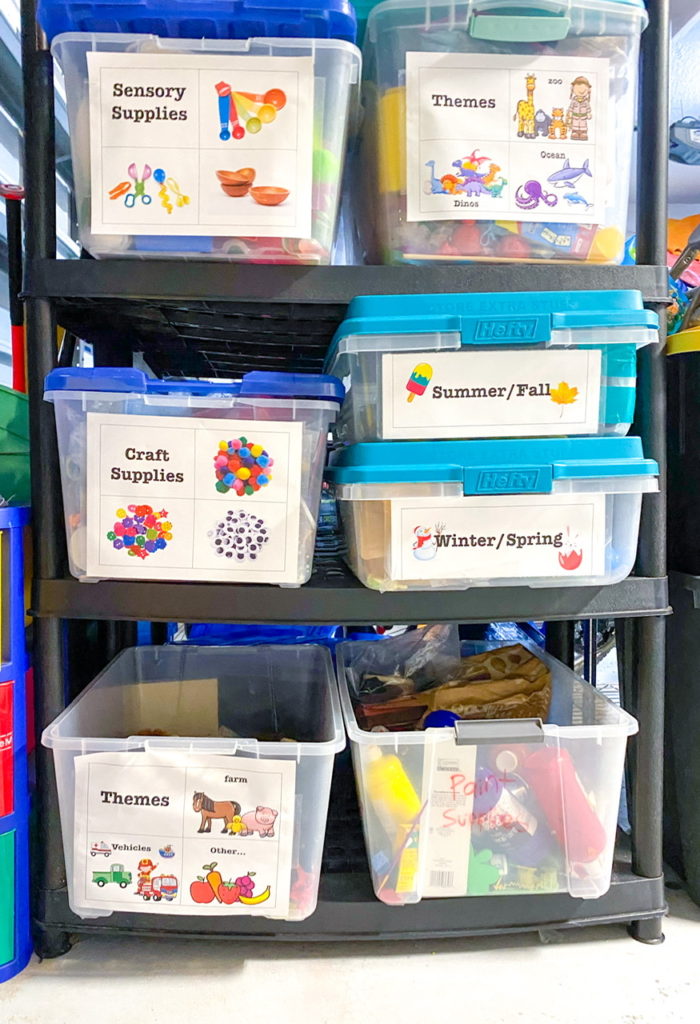
When I don’t have enough toys to dedicate a single box for each theme I combine the themes in a box and do smaller Ziplocks or boxes within to divide them and to be easily accessible when I need them.
I have a few large size bins in the garage because I store Manu’s toys as well as supplies I use for my sensory classes. I have a lot of supplies for some stuff and only a few for others, so I had to combine others to create a system that works for me.
- Sensory Supplies: This includes all types of scissors, cups, spoons, tons, etc… for fine motor skill development during sensory play.
- Zoo, Dinos and Ocean: These themes are my favorite type of activities, I have a few toys, puzzles, and books for these themes so they share a bin.
- Crafts: This holds all materials for crafts such as ribbons, buttons, glue, paper, googley eyes, sticky paper, glitter, feathers, etc…
- Seasonal: I have just started to gather supplies by seasons. So far I have play carrots, soft pastel rainbow rice, counting rubber bunnies and play carrots, rainbows, rainbow rice, clouds, flowers, bugs, and any other related spring theme toys and supplies. I use this to create invitations to play and sensory bins. I really is that each season will have its own bin.
- Other Themes: This includes all theme-related toys that I don’t have enough large quantities to have their own bin.
- Paints: I have a large number of paints, washable paints, acrylic paints, finger paints, chalk, paint brushes, paint pallets,etc.. I love art and I used to do lots of art activities even when Manu wasn’t born yet, so I love to have theSe way to access and ready to use. For this reason, they deserve their own bin!
- Not shown above – Unused toys bins- I have a two large bins where I keep toys that have been given to me but are not developmentally appropriate to be used yet.
- Not shown above -little shoe box Bins: At the very top of the rack, I have small bins with other items to keep them organized. A bin of markers, pipe cleaners, wooden toys, and easter eggs. I’m going to redesign this section but for now is very messy and doesn’t really have a system yet. Is a catch-all shelf for now.
How often should you rotate the toys
Creating a schedule is important when it comes to freshening up the toys. It is also important to find a schedule that works for your family.
How often you rotate toys is really up to you. Toys can be rotated weekly, monthly, quarterly, or as regularly as child-led.
I started rotating toys every Sunday night after my son went to bed. A few weeks in I realized that was just too often and sometimes my son was not tired of the toys yet.
My new schedule is at least once a month I so afresh rotation. I pick a theme and try to implement it based on that. During that month, I rotate the toys I see he is not using and replace them with new ones.
This leas strict rotation works for our family. Find out what works for you.
How do you remember when to rotate?
An easy way to remember how to rotate them is to rotate the toys on the same day each time. Pick a day of the week to switch up all the toys on the shelf. If weekly is too often, pick a day in the week/month/quarter and add it to your calendar. This way, there will be freshly rotated toys to play with often.
Do you rotate all toys or some toys stay out?
As I mentioned above, my favorite type of rotation is child-led toy rotation. Although, I love to do themes, and I often do them to align with my curriculum teaching. I found it less overwhelming to rotate a few toys when I see my son is not playing with something, and I need to replace it with something else.
If I know that my child is going through a play stage, I consider that when choosing the toys. If he is in a stage of throwing everything, then I am careful to add toys that have heavy wooden pieces and instead add a lot of balls and bean bags he can throw and explore that stage.
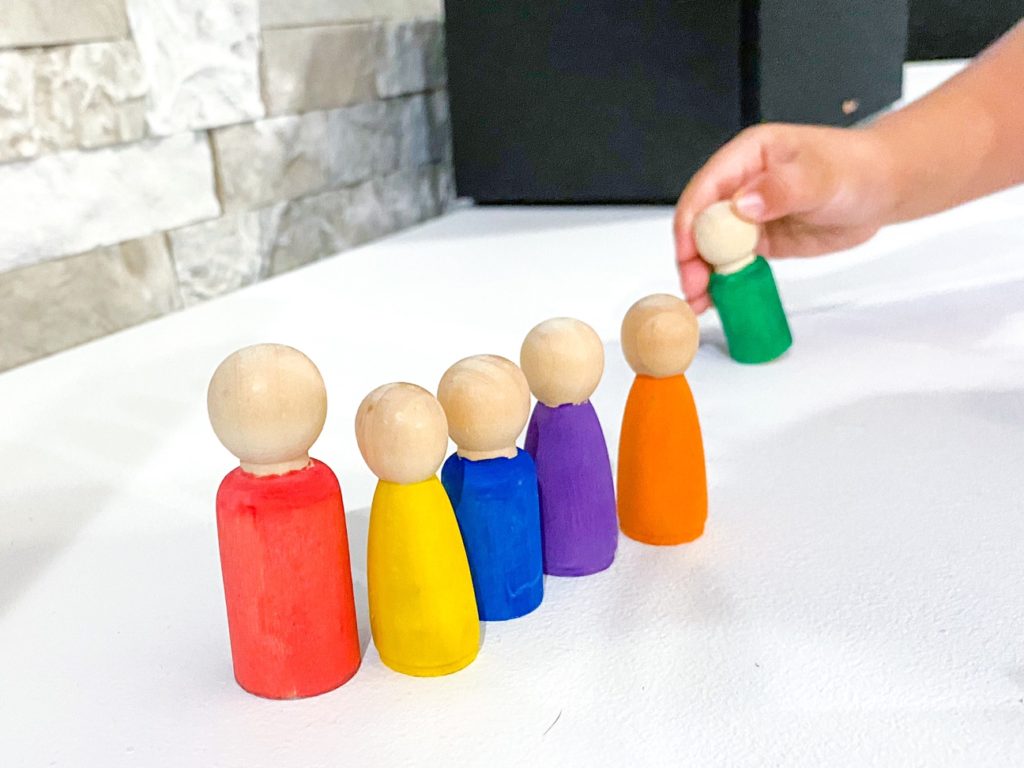
What if my toddler doesn’t have a lot of toys
Even if you consider your toddler not to have too many, there is still a way to do toy rotation.
Start with a small shelf and let your little one explore a few toys. Create some activities that you can DIY and add to the rotation.
An empty shoebox with a circular hole in the top and a small ball is one of my favorite DIY activities. Of course, the activity will depend on your little ones’ age, but there are so many ideas you can do even if you are not the DIY type!
Create baskets with real objects that can be safely explored, like a box of wooden materials, or things that shine.
How many toys should be out at one time
Montessori experts suggest only have 8-10 activities or toys at one time. This can be a combination of store-bought toys and DIY toys and activities.
Montessori theory suggests that you add one toy per cube, or if you have an open shelf to separate them into baskets to separate one toy from the other.
Evaluate how many toys you can fit on your shelf using this principle.
I have two shelves where I rotate toys in the playroom so I have more than 10 toys. What I try to do is not to have too many toys that require small pieces out a time to make cleanup faster.
Start with 8 toys and see if you have too many or too little and adjust from there.
What are some of your favorite must-have Open-Ended Toys
As your child grows, so will your toy collection. Here are a few toys I encourage every play area to have. These toys can be used at any age and are open-ended enough that it guarantees playtime for years to come.
Even though some might feel on the pricey side, if you divide the cost of the toy by the number of times the toy will be used, it is probably cheaper than some toys that will only be used for a little while.
- Blocks: Lego Duplo, Lego, or even play wooden blocks
- Play Silks: A pack of 6 colors is all you need! These can be used
- Animal Figurines: Zoo themed, ocean-themed, farm-themed. Big or small!
- Peg Dolls: These can be used for pretend play, color matching or even stacking
- Toys that show movement: Balls, ramps, train tracks are great to promote exploration through cause and effect, movement, and imagination.
- Art area: A place to sit, with a few art supplies
- Puzzles: This one is not as open-ended, but I had to add it to the list! It is a favorite in my house. There are so many different types of puzzles to make this a fun learning experience.
- Books: Books are great learning tools. Pair them with a matching toy or activity.
Books bring me to the next point.
should you rotate books?
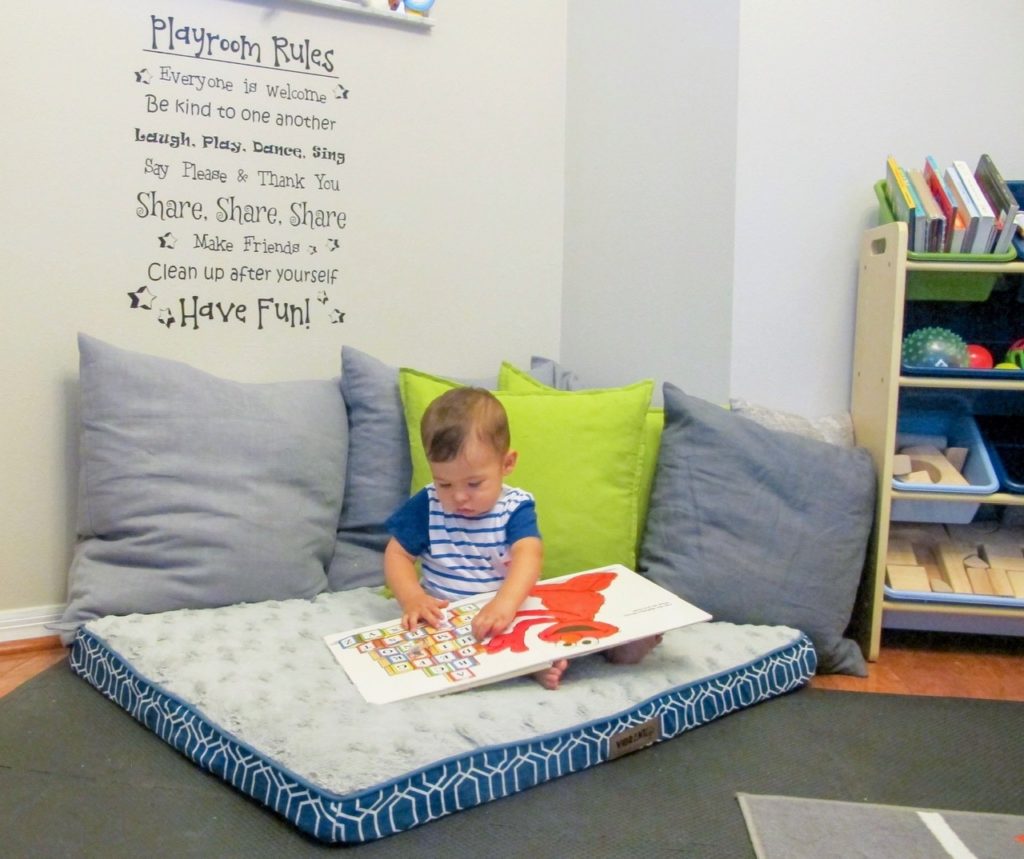
Kids will benefit from books being in rotation too because again, when there are too many options they have a hard time choosing.
I noticed that when I had too many books out there, my son wouldn’t even touch the books, but when I had a few out, he would see them, read them and engage with them more.
Books are part of my toy rotation system. Sometimes they go with the theme we are working on, others, I just choose a few favorites to read, and that’s it.
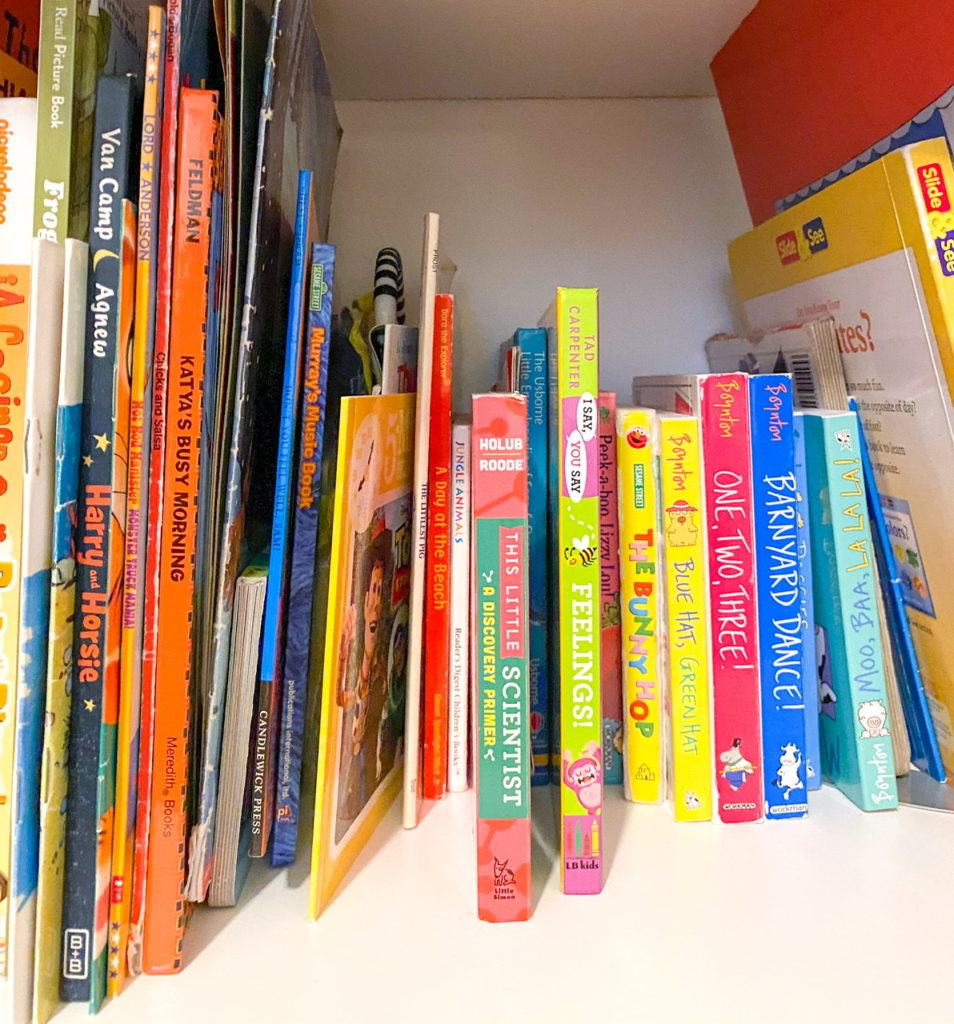
I place the books either facing forward on a shelf where my son can see which book is available or in a shallow box next to the reeding book we created with a few pillows and a new dog floor bed. (If you need a reading book check this list of 6 reading nook ideas you can do at home)
How does clean up work?
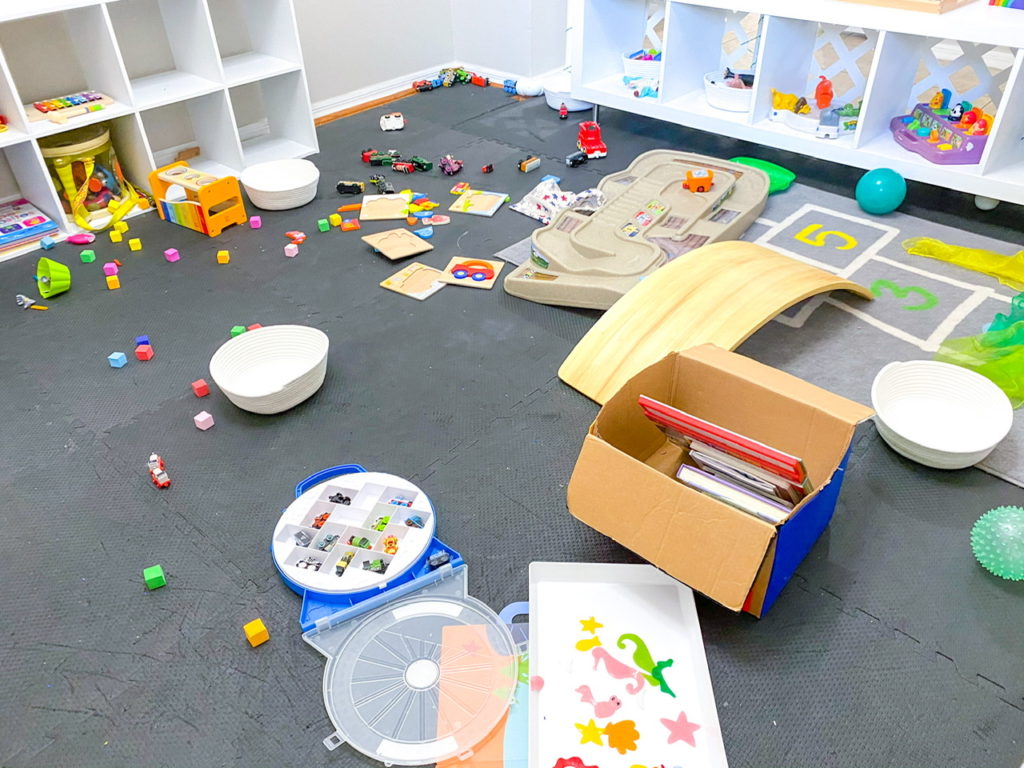
Because we now have a lot fewer toys out there, cleanup is going to be much faster! Also, because cleanup will take less time, your toddler will be more likely able to participate. This will teach a great skill to take care of our toys and put them back when we are done.
If you are just starting to teach your toddler how to clean up, choose a cleanup song. I use the typical cleanup song but shorter. And every time it is time to clean up, I say:
“It’s clean up time!
(and I start singing)
Clean up, clean up; everybody do your share,
Clean up clean up everybody do your share,
Bye, bye toys,
A guardar (Spanish for – it’s time to put them away)”
At first, I was cleaning up and singing on my own. I kept doing it in the hope that he would one day join me. I am happy to announce that only a few months after implementing this, he now joins and sometimes even sings and picks up on his own.
Disclaimer: No, he doesn’t clean up the whole playroom, but I give him points for effort for at least picking up a set of toys even though the rest of the eight toys are on the floor.
Final Thoughts on Toy Rotation
I hope that now, you have an idea of how toy rotation works and how you can implement it at home. What type of toys to rotate, when to rotate them, how to store them, and how to clean them up.
If you need ideas on DIY toys, you can check a few toddler DIY toys we created, and if you want to add a few new educational toys, you can check out my toy selection by age on Amazon where I have a list of the toys we have and others I recommend divided by age group.
